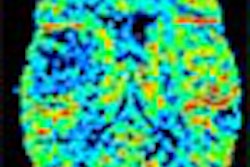Eight patients in Panama have died following radiation therapy for pelvic cancer, according to the latest report from the International Atomic Energy Agency (IAEA) in Vienna. At least five of the deaths and several other injuries apparently resulted from radiation overdoses, the IAEA said.
Soon after Panamanian officials told the agency on May 22 that a radiologic accident had occurred at the National Oncology Institute in Panama City, it dispatched an international team of experts to investigate reports that cancer patients had received radiation overdoses in the course of radiotherapy. The accident was likely caused by human error, specifically the incorrect computer entry of treatment protocols, according to a preliminary report of agency's findings obtained by AuntMinnie.com.
So far, eight of 28 patients undergoing treatment for pelvic cancer have died. Five of the deaths are "probably attributable to radiation exposure," the investigators wrote.
"Of the three other deaths, one was considered to have been related to the patient's cancer, while there was insufficient information to draw conclusions with respect to the other two," they reported. "Of the 20 patients who are alive, some have developed serious radiopathological complications."
The radiotherapy unit, a cobalt-60 teletherapy machine and computerized treatment planning system, was found to be in perfect working order. But there were problems with data entry, the investigators wrote.
"The computerized treatment planning system used in the National Oncology Institute requires that the data on the spatial coordinates of shielding blocks used to prevent healthy tissue during radiation radiotherapy be entered into the system one block at a time, following a certain sequence and subject to a limitation on the number of blocks."
However, beginning in August 2000, the process was changed so that coordinates for all of the blocks were entered as a single block, investigators said, "resulting in incorrect calculated radiation doses, and consequently, treatment times."
Combined with an apparent lack of written procedures, and of a manual check when the procedure was changed, the circumstances resulted in radiation overdoses to the patients, according to the IAEA.
On the political front, Panamanian daily La Prensa reported yesterday that the nation's former health minister José Terán resigned on March 28, just a few days after he learned of the disaster. But Terán said the timing of his resignation was a "mere coincidence," and that corrective measures had already been taken at the institute by the time he stepped down. Why the problem remained under wraps for nearly two months after the government learned of it is another question that's sure to be raised as the accident makes its way through the legal system.
Based on early accounts, AuntMinnie.com reported last week that the overdoses occurred on May 18. However, La Prensa said yesterday that the radiation treatments were actually halted in February, after institute officials began to suspect that patients were being overdosed due to symptoms such as burns and diarrhea. Seven more deaths have also been reported since May 22, when the IAEA was first told of the accident.
The institute's files are being photocopied and sent to Panama's ministry of health so it can begin to assess blame and pursue appropriate legal measures, a health ministry source reportedly told La Prensa.
A spokesman for the Fairfax, VA-based American Society of Therapeutic Radiation and Oncology told AuntMinnie.com that it was hard to imagine a similar scenario occurring in the U.S.
"It is far less likely because of the importance we place on thorough quality assurance," he said. "In addition, we have a number of organizations that provide standards, monitoring programs, consensus statements and accreditation that are all designed with quality and patient safety in mind. These organizations include the American College of Radiology and the AAPM ... the American Association of Physicists in Medicine."
The AAPM has both diagnostic- and therapy-side physicists who work closely with radiologists and radiation therapists, he said.
By Eric BarnesAuntMinnie.com staff writer
June 6, 2001
Related Reading
Investigation continues in fatal Panama radiation therapy accident, May 29, 2001
Click here to post your comments about this story. Please include the headline of the article in your message.
Copyright © 2001 AuntMinnie.com



















